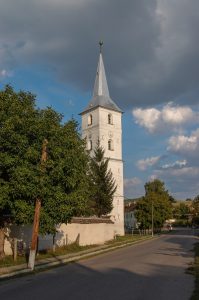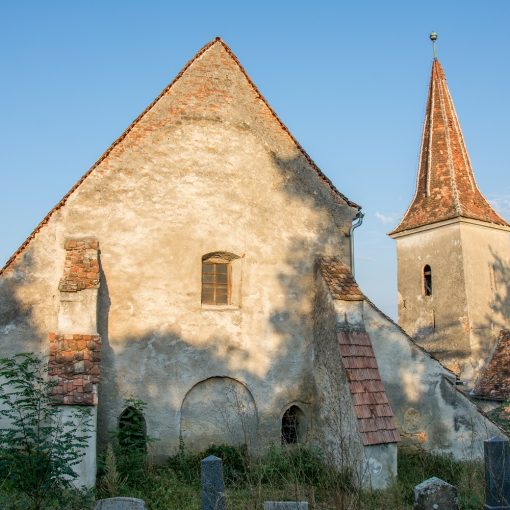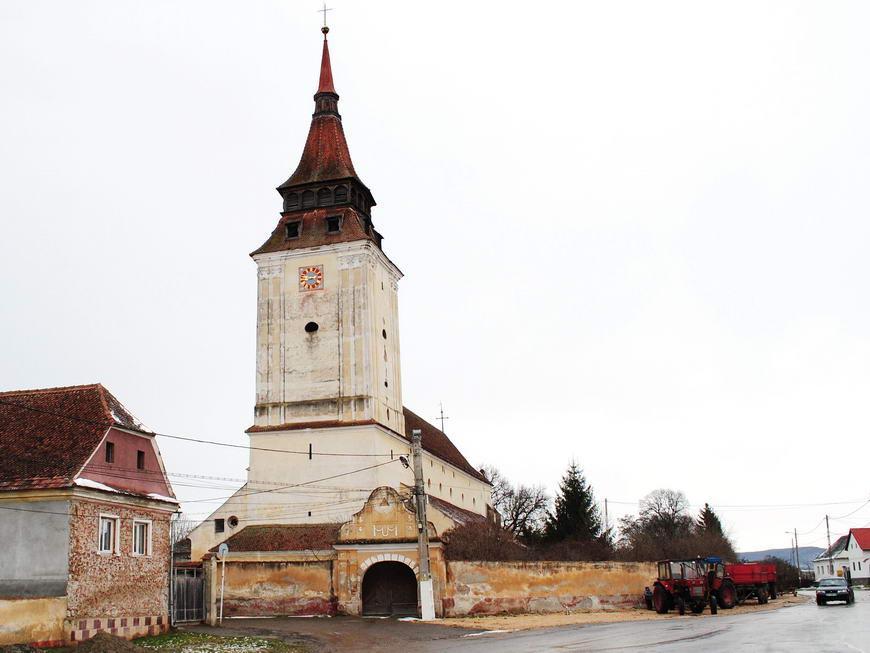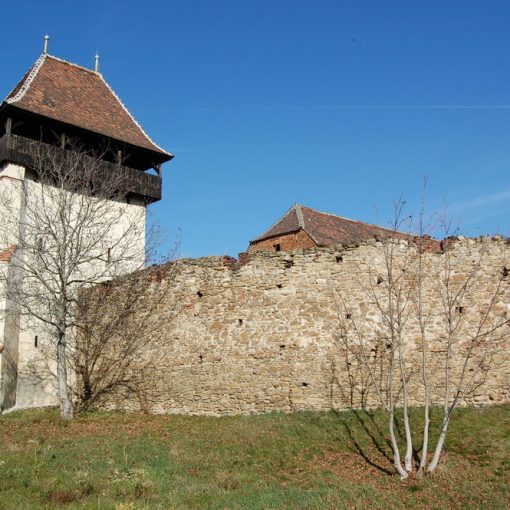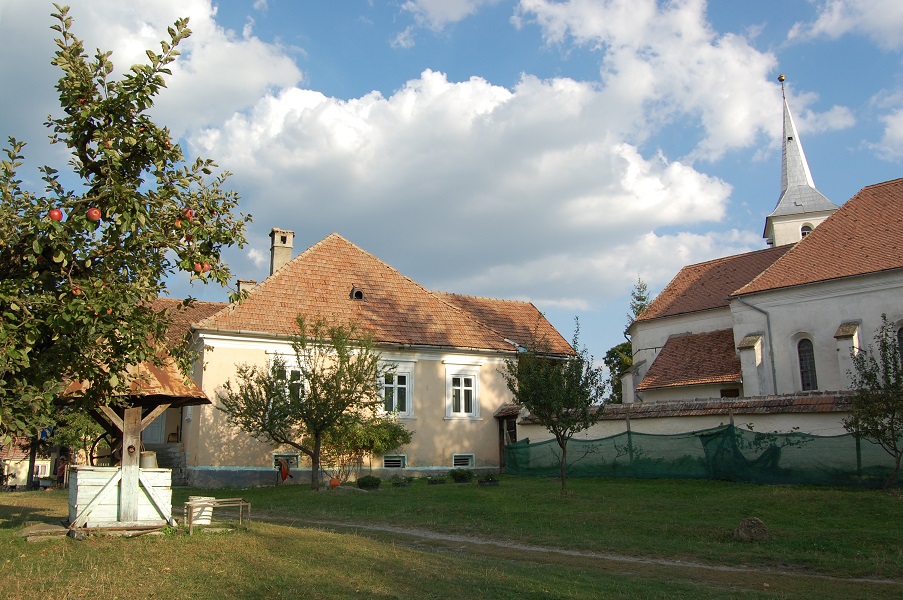
Significant parts of today’s church originate from a Gothic church whose first construction phase dates back to the 14th century. The side aisles speak for this dating, suggesting that the church was originally a basilica. In addition, a parish priest in Batoș was first mentioned in a document as early as 1332. A major fire considerably damaged the church in 1728. Less damage was done to the bell tower built in 1638 in the southeast of the church. The reconstruction of the church began in 1781 with the Baroque reconstruction. The nave was covered with late-Baroque sail vaults with Rococo-style ornaments and galleries were added on three sides. On cl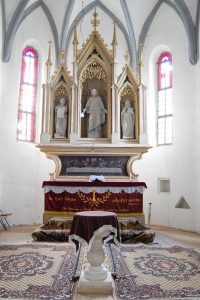 oser inspection, Gothic details can still be seen today: the Gothic doorframe to the sacristy, the pointed arch of the triumphal arch or the two-part Gothic seating niche in the south wall of the choir. The neo-Gothic altar dates from 1864; in its three niches, there are statues of Jesus and two Apostles. Thirty panels from around 1700 have been preserved, which represent seasons and months symbolically, but also show biblical scenes.
oser inspection, Gothic details can still be seen today: the Gothic doorframe to the sacristy, the pointed arch of the triumphal arch or the two-part Gothic seating niche in the south wall of the choir. The neo-Gothic altar dates from 1864; in its three niches, there are statues of Jesus and two Apostles. Thirty panels from around 1700 have been preserved, which represent seasons and months symbolically, but also show biblical scenes.
Place and Surroundings
The most beautiful parish festival in Batoș was always celebrated on June 24, “Blasitag”. It was a popular children’s festival in all Transylvania, where the whole village gathered in the parsonage. A few days before the Blasitag, the best four pupils of each class got themselves officer’s uniforms and the corresponding sabers. In the morning of the festival day the big procession was formed, preceded by the brass band, then the major surrounded by the flag bearers. Major was always the best student of the last class. He sat high on horseback with a chako and a saber. He was followed by the schoolgirls in their bright costumes, then the boys of the same class. Order was ensured by the officers in uniform. In the afternoon the girls and boys performed folk dances and later the village band played in the square behind the community hall. Only the schoolchildren were allowed to dance here in the afternoon. The older ones watched or went to the inn next to the bowling alley.
Contact:
Ev.Parish Reghin
Tel.:+40/265/ 511 025

